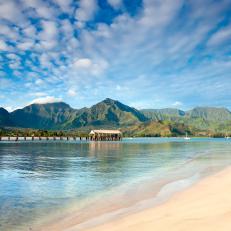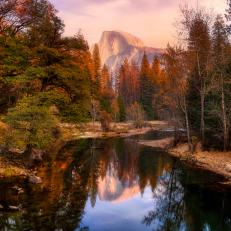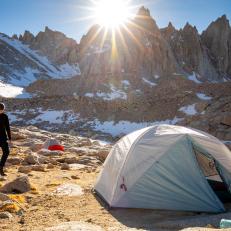Get Lost in America's Enchanting Forests
They say a forest is a living thing — just like a human body. And like us, they undergo changes and exhibit moods. Basically, you could never get bored in a forest, because no forest ever stays the same. America does forests particularly well, and although millions flock to national parks every year, the national forests sometimes get lost in the fray.

Photo By: Inti St Clair
Photo By: jared lloyd
Photo By: VW Pics
Photo By: Steve Prorak / EyeEm
Photo By: Danita Delimont
Photo By: DenisTangneyJr
Photo By: tristanbnz
In 1891, President Benjamin Harrison signed the Forest Reserve Act of 1891 into law. The legislation came after years of exploitative logging, which had all but destroyed the nation’s swathes of forests. In 1905, those now-protected areas of land fell under the responsibility of the Bureau of Forestry, which eventually renamed them national forests.
The National Forest System, which operates under the US Forest Service, manages hundreds of millions of acres, which every American has the opportunity to enjoy. Here’s just a few of our favorites.
Gallatin National Forest, Montana
Snaking trout streams and rivers flow through this stunning forest, which makes up part of the Greater Yellowstone Ecosystem. So beautiful that it was the backdrop for Robert Redford’s A River Runs Through It; this forest is a fisherman’s paradise.
Gifford Pinchot National Forest, Washington
Elk, black bear, mountain goats and bobcats roam these woods, and not to mention the chinook salmon, and three species of trout that swim the lakes, rivers and streams. It’s famous for its unique landscape of tunnels and caverns, including the 2.5 mile-long “Ape Cave”, and features plunging waterfalls and lush tree canopies.
Superior National Forest, Minnesota
There’s more than 445,000 acres of water in the wilderness of Northern Minnesota, and this forest packs a punch. Visitors can paddle canoe trails through the Boundary Waters Canoe Area Wilderness, keeping an eye out for moose. Boat, canoe, fish, camp, and hike trails that take everything from just a few hours to well over a week.
Manti-La Sal National Forest, Utah
Deep sandstone canyons, meadows, lakes and mountains form the landscape and other-worldly scenery. The 1.4 million acre mountain rain occupies part of central and southeastern Utah, even stretching into Colorado. Camping here offers sunrises over snowy peaks, the smell of pine trees, and rich red towers and buttes of Castle Valley.
White Mountain National Forest, New Hampshire
Mount Washington towers over the park and is known for its terrible weather — winds in excess of 200mph have been previously recorded here. But weather aside, the forest has an abundance of tree species, from spruce and fir up high, to oak, maple, pine, birch and hemlock down low. Stretching more than 800,000 acres, this is wild country, and don’t miss it in the fall, when the forest is blanketed in a golden canopy.
Cibola National Forest, New Mexico
“Sky islands” form this forest, which covers 1.6 million acres and stretches 11,300 ft to the sky. The name Cibola is thought to be a Zuni Indian name for their pueblos or tribal lands, which was later interpreted by Spanish to mean buffalo. The islands are isolated mountain ranges that make the desert lowlands and high peaks drastically different. They have unique biodiversity, and deer, elk, antelope, raptors and turkey can be found, as well as ample fishing opportunities in the island lakes, and even skiing in the winter.





















